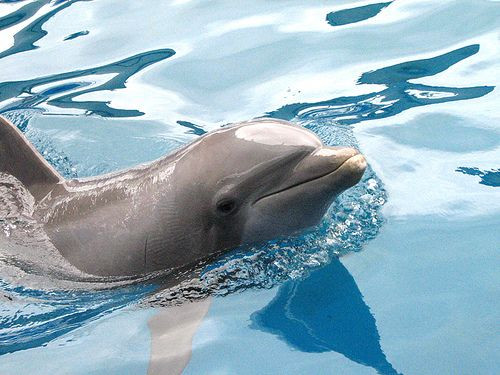Dolphin Deaths In East Coast Blamed On Measles-Like Disease, As Death Toll Hits 300

Scientists continue to investigate the mysterious deaths of some 300 bottlenose dolphins washed ashore along the East Coast this summer, from New York to Virginia.
Most of the 300 dolphins — at least 216 — were found on Virginia beaches in what the U.S. National Oceanic and Atmospheric Administration is calling an “unusual mortality event” for the marine animals. An infectious disease may be the cause of the deaths, Maggie Mooney-Seus, a spokesperson for the agency, told National Geographic by e-mail. “We realize that people are very concerned and anxious to learn what we know about the dolphin deaths that have been occurring along the mid-Atlantic coast over the past few weeks.” The investigators continue to test blood samples from the dolphins for toxins including bio-toxins, bacteria, fungi, and viruses.
Several of the dolphins may have died from morbillivirus, an airborne virus similar to measles in humans, but with a much higher mortality rate. As measles kills one in 1,000 infected people, morbillivirus kills in higher numbers, striking at least 900 East Coast bottlenose dolphins in 1987 and 1988 epidemics. Yet, scientists still can't say whether the deaths have been caused by a possible breakout of the disease. “We share the public’s desire to get answers to what is causing this and are working as quickly as we can to get those answers," Mooney-Seus said.
The sudden rise in dolphin deaths follows a series of unusual mass deaths for marine animals along the Atlantic Coast in recent decades, including the deaths of more than 1,000 dolphins and whales since February of 2010 in the northern Gulf of Mexico. The “concern is we’re doing more and more to protect dolphins from harm, yet dolphin strandings are on the rise,” Matthew Huelsenbeck, a marine scientist at the nonprofit Oceana, told National Geographic earlier in August. “No one seems to have a solid grasp on what’s going on.”
Dolphins may serve as a barometer for the general health of humanity’s shared ecosystem, as “some of the most toxic animals on the planet,” as Huelsenbeck put it. The marine animals carry heavy metals and toxins that accumulate in the food web, strangling their immune systems. The few hundred dolphins washed ashore late this summer along the coast represent a small proportion of the deaths, as most of them decay at sea or are eaten by predators. “For a lot of these animals,” he said, “there story will never be told.”
The sudden mass death of bottlenose dolphins in the Atlantic is also notable for the vast amount of oceanic territory, Kimberly Durham, rescue program director of the Riverhead Foundation for Marine Research and Preservation in N.Y., told LiveScience. “This particular event is the first one that’s incorporated New York.” Other than the measles-like infectious disease that killed hundreds of similar dolphins in years past, fatal forces in the ocean may include sonar, Durham said.
“We’re not limiting the investigation to just one factor,” Durham told LiveScience, adding that marine biologists look at any factors challenging the dolphin’s immune system, including sonar.



























